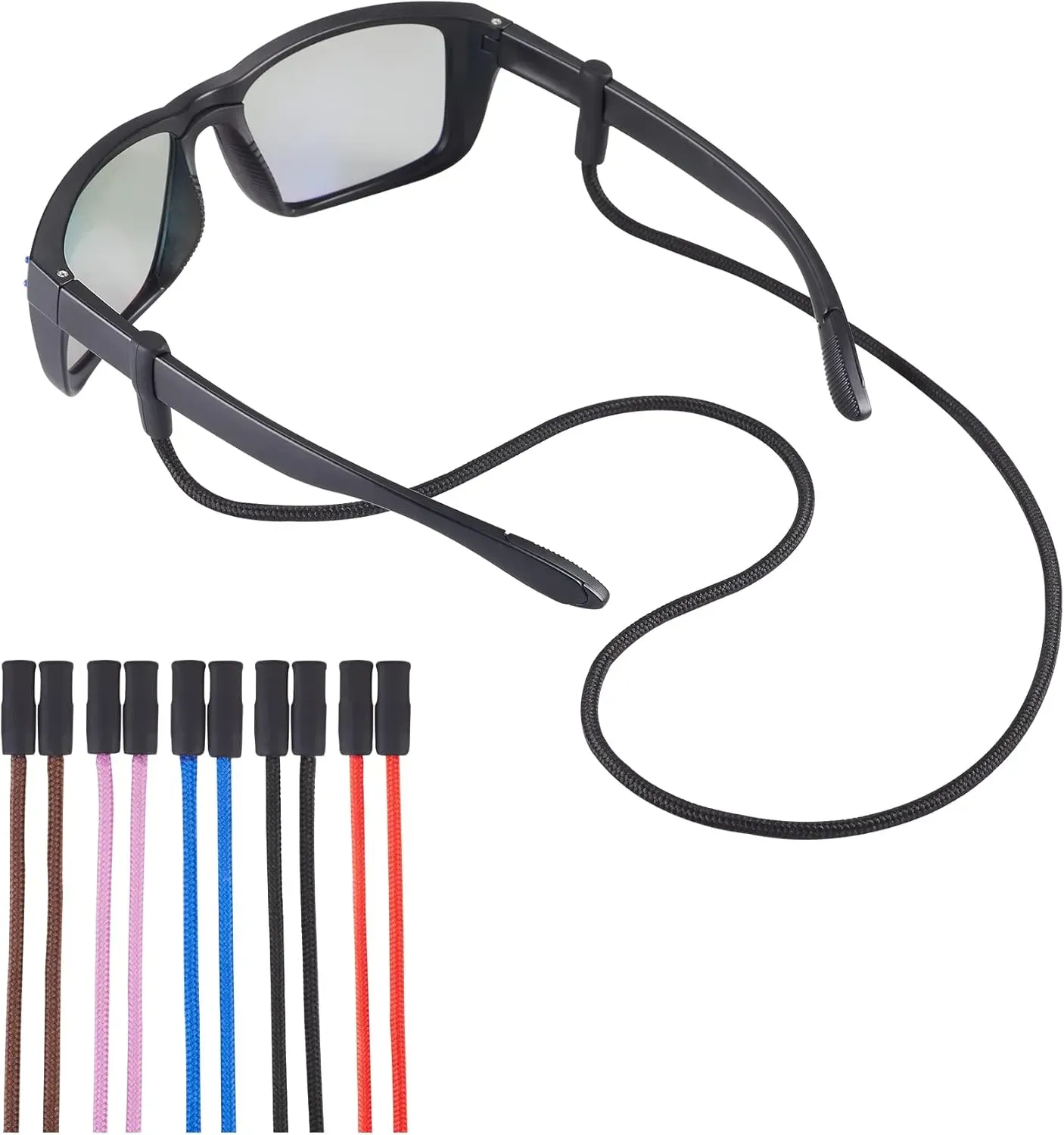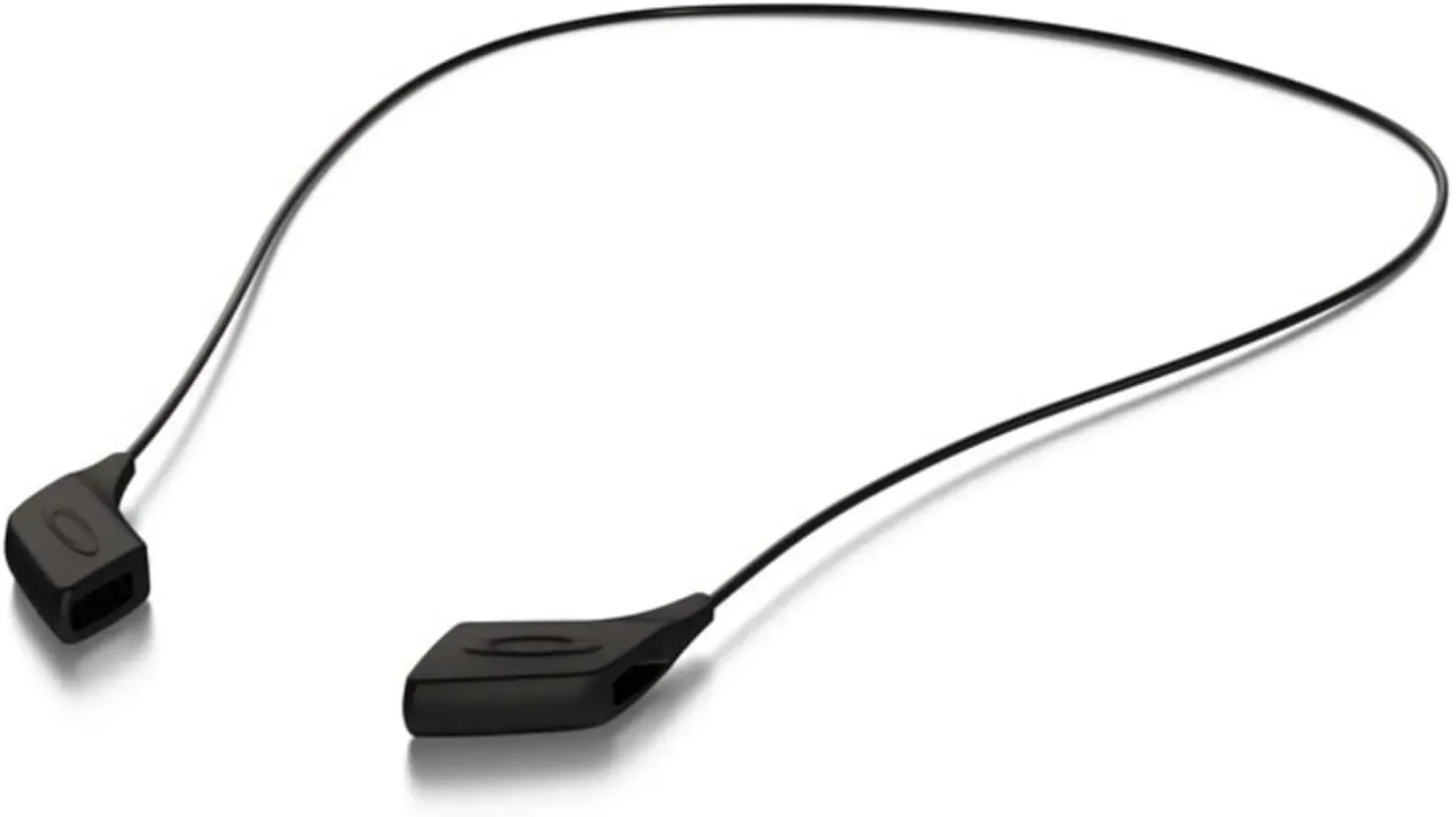Table of Contents
Let's be honest, you've been there. That sickening lurch in your gut when you realize your favorite shades aren't perched on your head or tucked safely in your pocket. Maybe they tumbled off during a hike, splashed into the water while you were fishing, or got crunched when you leaned down to tie your shoe. Sunglasses aren't cheap, and the feeling of losing or damaging a pair is a special kind of frustration. It’s enough to make you consider strapping them to your face permanently.
The Unsung Hero: What Exactly is an Eyewear Retainer?
The Unsung Hero: What Exactly is an Eyewear Retainer?
More Than Just a String: Defining the Eyewear Retainer
Alright, so you've probably seen them – those things hanging off the back of someone's sunglasses. Most people just call them a sunglass leash, strap, or cord. But the proper term, if you want to get technical (and sometimes we do), is an eyewear retainer. Think of it as a safety net for your face furniture. It’s a simple device, usually a cord, strap, or cable, designed to attach to the temples or ends of your glasses or sunglasses. Its one job? To keep your eyewear connected to your head or neck when they're not actively on your face, or more importantly, when they accidentally get knocked off.
These aren't exactly cutting-edge tech. The basic concept has been around forever – a way to prevent gravity and sudden movements from sending your valuable lenses crashing to the ground or disappearing into the abyss. They come in myriad materials, from neoprene and fabric to braided cable and even beads, each offering different levels of comfort, durability, and buoyancy. The core function remains the same: providing that crucial tether that saves you from the "oh no" moment when your shades decide to make a break for it.
Why "Unsung Hero" Fits the Bill
Calling it an "unsung hero" might sound dramatic for a bit of string, but how many times have you seen someone frantically searching for their glasses after they slipped off? Or worse, heard the sickening crunch of a lens underfoot? The eyewear retainer prevents these minor tragedies daily, quietly doing its job without much fanfare. It’s the bodyguard your sunglasses didn't know they needed until disaster struck. Whether you're leaning over to pick up something, getting jostled in a crowd, or battling wind on a boat, the retainer is there, a silent guardian keeping your investment secure.
Consider the alternative: constantly removing and putting away your sunglasses, or risking them slipping off your shirt collar or the top of your head. It’s inconvenient at best, and costly at worst. A good sunglass leash integrates seamlessly into your routine, allowing you to take your glasses off momentarily without needing a pocket or case. They just hang there, ready when you need them. It's a small thing, really, but the peace of mind it offers is substantial.
Common Names for Eyewear Retainers:
- Sunglass Leash
- Glasses Strap
- Eyewear Cord
- Sunglass Retainer
- Glasses Holder
- Croakies (often used generically, like Kleenex)
Beyond Just Holding Them: Why You Actually Need a Sunglass Leash
Beyond Just Holding Them: Why You Actually Need a Sunglass Leash
Protecting Your Investment (and Your Sanity)
let's get down to brass tacks. The most obvious, and frankly, most important reason to use a sunglass leash? You stop losing your expensive eyewear. Think about it. You just dropped a decent chunk of change on a pair of quality sunglasses – maybe polarized lenses for fishing, or durable frames for hiking. They're not just pieces of plastic and glass; they're tools, and often, a bit of a style statement. Watching them slide off your head and bounce down a rocky trail, or worse, plop into the murky depths of a lake, is enough to make you question all your life choices leading up to that point. A sunglass leash acts as a simple, inexpensive insurance policy against gravity and clumsiness. It keeps them tethered, right there, ready when you need them, and safely out of harm's way when you don't. It's less about looking cool (though some styles do that) and more about preventing that sinking feeling of loss.
Convenience and Activity Security
Beyond just preventing catastrophic loss, a sunglass leash adds a layer of practical convenience to your life. How many times have you taken your sunglasses off indoors, or in the shade, and then spent the next five minutes trying to remember where you put them? With a leash, they just hang around your neck. Problem solved. This is especially crucial when you're active. Trying to keep track of shades while kayaking, climbing, or even just chasing kids around can be a nightmare. A good sunglass leash keeps them secure through sudden movements, wind, and even splashes. It frees up your hands and your brain space, letting you focus on what you're doing instead of constantly patting your head to check if they're still there. It’s a small detail that makes a surprisingly big difference in your day-to-day.
Ask yourself:
- How much have you spent on sunglasses in the last five years?
- How many pairs have you lost or broken?
- Could a simple tether have saved even one of those pairs?
- Isn't the cost of a sunglass leash worth avoiding that heartache?
Finding Your Perfect Sunglass Leash: Materials, Styles, and Fit
Finding Your Perfect Sunglass Leash: Materials, Styles, and Fit
Picking Your Poison: What Material Works Best?
Alright, so you're sold on the idea of not losing your shades every other week. Great. Now you have to navigate the dizzying array of options out there. The first big fork in the road is material. You've got your classic neoprene, the spongy stuff that often floats and grips pretty well. Good for water sports or sweaty activities. Then there's fabric – nylon, cotton, sometimes with patterns if you're feeling fancy. These are generally comfortable but can absorb sweat and water, getting a bit heavy. You'll also see braided cables or thin ropes, often more discreet and durable for rougher use, though maybe less comfortable against your neck. Some even have silicone or rubber ends for a super snug grip on specific frame types. It really depends on what you're doing and what feels least annoying hanging on you all day. Don't just grab the cheapest one; think about how it will feel wet, dry, and against your skin for hours on end.
Style and Fit: One Size Does Not Fit All
Material is just the start. Style and fit are crucial. You need to check how the sunglass leash attaches to your frames. Some have universal rubber or silicone loops that stretch over most temple tips. Others have specific connectors, maybe for thicker or thinner arms. Then there's the length. Too short, and it feels like a choker; too long, and your glasses are bouncing off your chest or getting caught on things. Adjustable leashes are a lifesaver here, letting you cinch them up tight for running or loosen them to dangle comfortably. Some are minimalist and practically invisible, others are bright and chunky. Consider your frames too – a heavy-duty cable might feel weird on delicate wireframes, just like a thin string won't feel secure on chunky plastic ones. It’s about finding a balance between security, comfort, and not looking completely ridiculous.
Things to Consider When Choosing:
- What activities will you be doing most? (Water, hiking, casual?)
- What material feels most comfortable on your skin?
- How do the connectors fit your specific sunglass frames?
- Do you need adjustable length?
- How important is buoyancy?
- Do you prefer something discreet or visible?
Matching the Leash to Your Lifestyle
Ultimately, the best sunglass leash for you is the one you'll actually use. If you're a serious angler, a floating neoprene strap is non-negotiable. If you're a hiker who just wants peace of mind on windy ridges, a durable, perhaps adjustable, fabric or cable leash might be better. For everyday use, maybe something comfortable and low-profile is key. Don't overthink it, but don't underthink it either. A cheap, ill-fitting leash is worse than none at all because it gives a false sense of security right before your glasses plummet into a ravine. Think about your typical day, your adventures, and what kind of abuse your eyewear is likely to face. That will guide you to the right material, style, and fit to keep your investment secure.
Making Your Sunglass Leash Last: Tips for Care and Durability
Making Your Sunglass Leash Last: Tips for Care and Durability
Keep it Clean, Folks
Look, your sunglass leash is going to get gross. It hangs around your neck, absorbs sweat, gets dunked in water (fresh or otherwise), and probably picks up sunscreen, bug spray, and whatever else is floating in the air. Ignoring this fact is a surefire way to shorten its lifespan and turn it into a grimy, potentially smelly accessory. Cleaning isn't rocket science, thankfully. Most fabric or neoprene leashes can be hand-washed with mild soap and cool water. Think dish soap or gentle laundry detergent, nothing harsh. Rinse thoroughly to get all the soap out. For cable or cord leashes, a quick wipe-down with a damp cloth is usually enough unless they've been properly slimed. Saltwater is the enemy of most materials, especially metal connectors if your leash has them. If you've been near the ocean, a freshwater rinse is non-negotiable as soon as possible. Don't just let it dry with salt crusting on it; that stuff is corrosive.
Material Matters: Specific Care Notes
Different materials need slightly different love. Neoprene, the popular choice for water activities because it floats, should be rinsed and air-dried completely. Don't leave it wadded up wet, or it'll get that lovely mildew smell that screams "I haven't been cleaned since the last century." Fabric leashes, especially cotton, can take longer to dry and might need a bit more scrubbing if stained. Synthetic fabrics like nylon tend to dry faster. Braided cables or cords are generally low maintenance, but check the connection points where they attach to your glasses; these can be weak spots if not cared for. Avoid harsh chemicals or putting them in the washing machine unless the manufacturer specifically says you can – you risk damaging the connectors or the material itself. Air drying is almost always the safest bet for any type of sunglass retainer.
Quick Care Checklist:
- Rinse after contact with saltwater, chlorine, or heavy sweat.
- Hand wash with mild soap and cool water.
- Rinse thoroughly to remove all soap residue.
- Air dry completely before storing.
- Inspect connectors regularly for wear or damage.
- Avoid harsh chemicals or machine washing unless specified.
Storage and Inspection: The Final Steps
Once clean and dry, how you store your sunglass leash matters. Don't just jam it in a drawer with a bunch of other stuff where it can get tangled or snagged. Store it flat or hang it up if possible. Keep it out of direct sunlight for prolonged periods when not in use, especially if it's made of synthetic materials or has rubber components, as UV rays degrade them over time. Before you attach it to your prized eyewear from sunglasshub.org or wherever you got them, give the leash a quick once-over. Check the attachment points – are the rubber loops cracking? Is the stitching on the fabric frayed? Is the cable showing signs of wear? A failing leash is worse than no leash at all because you think your glasses are secure right up until they aren't. A few seconds of inspection can save you the cost and headache of replacing your shades.
Keep 'Em On: Why a Sunglass Leash is Just Smart
So, there you have it. The reality is, gravity is a cruel mistress, and accidents happen. Whether you're navigating choppy waters, scrambling up a trail, or just leaning over to pick up your dropped keys, your sunglasses are vulnerable. A reliable sunglass leash isn't some over-the-top accessory; it's a practical piece of kit that prevents a minor inconvenience from becoming an expensive headache. Think of it as cheap insurance for your eyes and your wallet. Choosing the right one means less time worrying about losing your shades and more time actually wearing them, enjoying the view, and keeping that sunlight out of your eyes. It's a simple fix for a common problem, and honestly, why wouldn't you?
